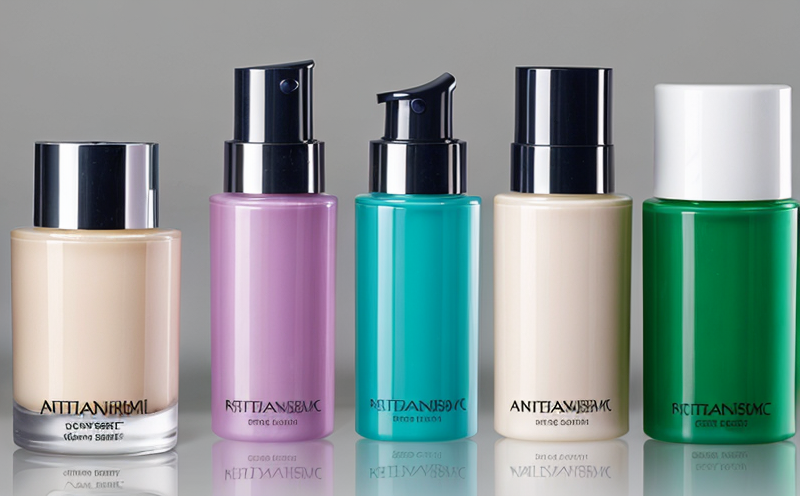Preservative Testing in Rinse-Off Cosmetic Formulations
In the realm of cosmetic formulation, ensuring product safety is paramount. Preservatives play a critical role by inhibiting microbial growth and extending shelf life. For rinse-off products such as shampoos, soaps, and lotions, preservatives must be rigorously tested to ensure they are effective against a broad spectrum of microorganisms while remaining safe for consumer use.
Preservatives in rinse-off cosmetics face unique challenges due to the product's physical properties and intended use. The high water content and frequent contact with skin make these formulations particularly vulnerable to microbial contamination. Therefore, testing is essential to guarantee that preservatives meet regulatory requirements and provide effective protection against pathogens like Candida albicans, Staphylococcus aureus, and Pseudomonas aeruginosa.
Testing protocols for rinse-off cosmetics involve a series of steps, each designed to evaluate the preservative's efficacy under realistic conditions. The first step is selecting an appropriate preservative or combination thereof based on the formulation's pH range and intended use. This selection process considers factors such as broad-spectrum antimicrobial activity, compatibility with other ingredients, and stability over time.
Once selected, the preservative must be tested for its ability to inhibit microbial growth in rinse-off formulations. This is typically done using American Society for Testing Materials (ASTM) standards, such as ASTM D4129-18, which outlines a method for determining antimicrobial efficacy of cosmetic preservatives against specified organisms.
Sample preparation is critical in ensuring accurate test results. Samples are prepared according to the manufacturer's specifications and then inoculated with selected microorganisms. Incubation periods vary depending on the organism but commonly range from 24 to 96 hours. At these intervals, samples are assessed for signs of microbial growth or activity.
Another important factor is the rinse-off process itself. Since rinse-off products are designed to be washed away, it's crucial that preservatives continue to exert their antimicrobial effects even after exposure to water and during washing. This can be tested by subjecting samples to a series of rinses, followed by incubation to observe any growth or activity.
Testing for preservative efficacy is not just about microbial control; it also encompasses the potential for irritation or sensitization. Regulatory bodies like the European Union Cosmetics Regulation (EC 1272/2006) require that preservatives in cosmetic products do not cause skin irritancy, contact dermatitis, or other adverse effects.
In summary, testing preservatives in rinse-off cosmetic formulations is a complex process that involves selecting the right preservative(s), preparing samples appropriately, and conducting rigorous tests to ensure efficacy against microorganisms. The goal is to provide consumers with safe and effective products while adhering to stringent regulatory requirements.
| Applied Standards | Description |
|---|---|
| ASTM D4129-18 | Method for Determining Antimicrobial Efficacy of Cosmetic Preservatives Against Specified Organisms. |
| European Union Cosmetics Regulation (EC 1272/2006) | Regulation on cosmetic products, including safety and efficacy requirements. |
Why It Matters
The importance of preservative testing in rinse-off cosmetic formulations cannot be overstated. Inadequate or ineffective preservatives can lead to product spoilage, which not only diminishes consumer satisfaction but also poses significant risks to public health. Microbial contamination is a leading cause of cosmetic-induced skin infections and other dermatological issues.
From a regulatory standpoint, non-compliance with preservative efficacy standards can result in severe consequences, including product recalls, fines, and reputational damage for manufacturers. Ensuring that preservatives meet or exceed the required standards is therefore not just good practice but legally necessary.
In addition to legal compliance, effective preservative testing enhances brand reputation by demonstrating a commitment to consumer safety and satisfaction. This can translate into increased customer loyalty and trust in the product line.
The potential risks of inadequate preservatives are manifold. They include:
- Increased risk of microbial infections
- Potential for allergic reactions or skin irritations
- Loss of consumer confidence leading to reduced sales and market share
- Legal and financial penalties resulting from product recalls
By rigorously testing preservatives in rinse-off formulations, manufacturers can mitigate these risks and ensure that their products are safe and effective. This commitment to quality not only protects consumers but also strengthens the brand's position in the competitive market.
Applied Standards
| Applied Standards | Description |
|---|---|
| ASTM D4129-18 | Method for Determining Antimicrobial Efficacy of Cosmetic Preservatives Against Specified Organisms. |
| European Union Cosmetics Regulation (EC 1272/2006) | Regulation on cosmetic products, including safety and efficacy requirements. |
Benefits
Ensures product safety by preventing microbial growth
Avoids product spoilage and associated risks to consumer health
Maintains brand reputation through compliance with regulatory standards
Enhances consumer trust, leading to increased loyalty and sales
Reduces the risk of legal actions and financial penalties due to product recalls
Provides a competitive edge by offering safe and effective products





